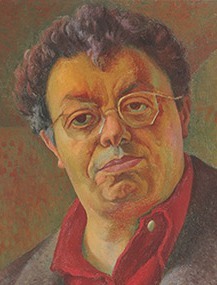This fall we’re interested in Mexican muralists of the 20th century – Diego Rivera was one of the leaders, and the Frida & Diego exhibition will be a major AGO attraction from October 20 to January 20, 2013.
Thanks to volunteer Mary Kirby’s research into these artists, we can visit the show with some key concepts already in mind.
Mary, a 17-year veteran with the Marvin Gelber Print and Drawing Centre, dug into the lives, work and impact of four of the greats: Diego Rivera, José Orozco, David Alfaro Siquieros and Rufino Tamayo.
She was preparing her talk for September 28, as part of P&D’s Striking Impressions series of public presentations offered the 2nd and 4th Friday each month, 11 a.m. to noon. (Her talk, in fact, had to exclude Rivera, since all of his works in P&D archives had been pulled for the exhibition.)
Pressed for just a few key ideas about the muralists, Mary selected these three:
- “They didn’t operate individually, but as a collective. They were a movement.” They knew each other, they had overlapping training and work backgrounds, they helped each other out.
- “It wasn’t art for art’s sake. They were using art to help build Mexico as a nation.” Murals were not only an indigenous art form, used by the Aztec and the Maya, they were an excellent way to speak simply and directly to the pueblo, the people.
- “They had huge influence on other artists – for example, Jackson Pollack.” They had all worked in the United States, where among others the Abstract Expressionists saw their art.
Did her research cause the muralists to influence Mary as well? “Oh, I respond to the art. It’s bright, clear, legible, ‘in your face’ – something that everybody can relate to, not just art experts.”
She laughs, and adds, “So far, I’ve only seen examples of their work in the United States. Now I am seriously interested in going to Mexico and seeing it there as well.”
